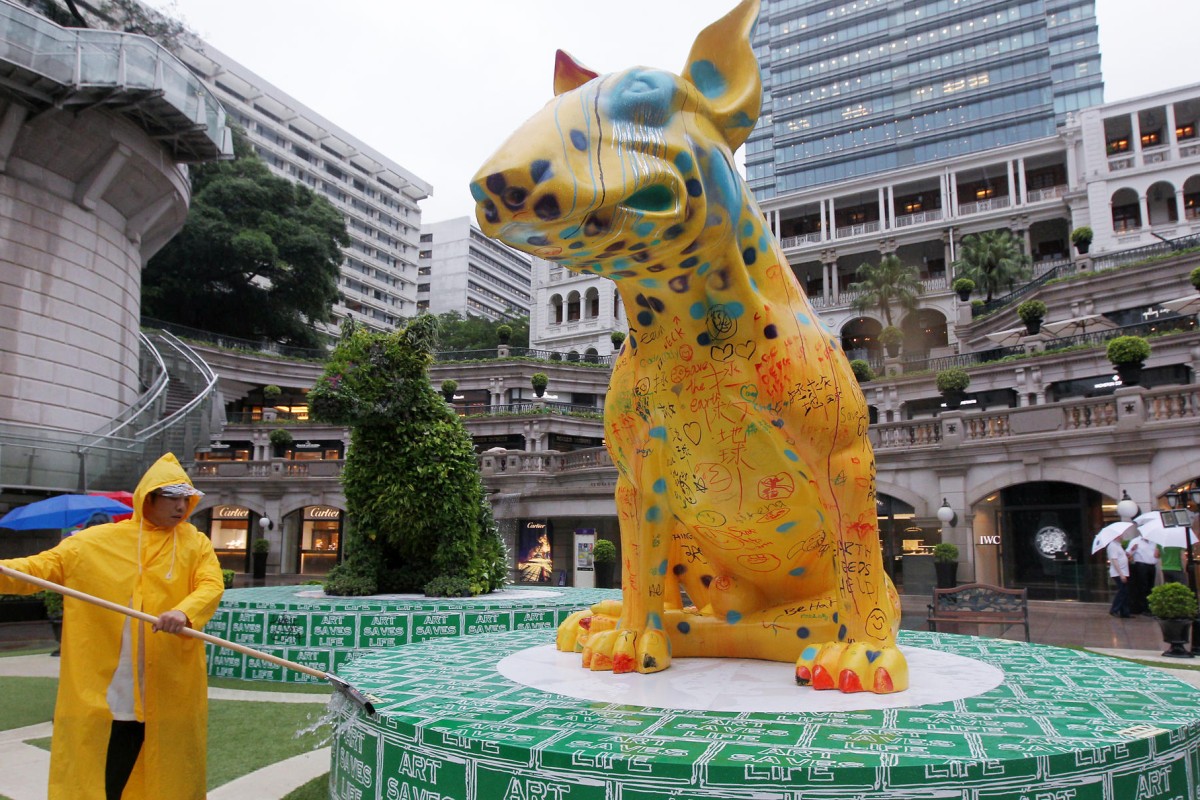 The dripping effect of Yellow LostDog represents acid rain.
The dripping effect of Yellow LostDog represents acid rain.Art can be so much more than a drawing or a sculpture, and French artist Aurele Ricard proves this with his "LostDog" series. It not only conveys a message of conservation, but also helps to actually purify the air.
Two of Ricard's creations, LostDog CO2 and the Yellow LostDog, are now on display at 1881 Heritage, in Tsim Sha Tsui, until August 31.
LostDog CO2 is a 3.8-metre sculpture densely covered with air-filtering plants like ferns, ivy and other vines. "I read in a [US space agency] Nasa report that they tried to remove the VOCs [volatile organic compounds] from the Skylab Space Station," he says.
"VOCs are harmful to the human body. They found around 100 plants capable of absorbing the pollutants and keeping them in their roots. I chose eight species of these purifying plants, because eight is a lucky number in China.
"I put around 1,500 plants in LostDog CO2, and each plant can clean 10 cubic metres of air per day. LostDog CO2 is a new generation of artwork. It is helping to save the planet by filtering polluted air."
Yellow LostDog is also a sculpture. It is 2.9m high, with drawings and words added by Ricard and some local children.
"The dripping effect represents acid rain. It looks like the dog is crying," says Ricard. Ricard says he was inspired by a lost dog poster he found in New York City in 1986.
Words on the poster represented different themes for him, which he reflected in the resulting artworks.
"In the poster, you see $100 - the reward. You see 'lost', highlighting the fact that everybody is lost. And 'friendly', showing that everyone is looking for love and friendship.
There's also 'wanted' - the craving for something, anything. I made a parallel between the lost dog and human life. And LostDog is a metaphor for our lives," he explains. LostDog has been Ricard's voice for almost 30 years.
Through the sculptures, he has been able to talk about pollution and protecting the environment.
"With the help of LostDog, I am trying to motivate others to do something for the next generation and for the planet," he says. "To improve the environment and give our children a better future, we need to change our thinking and our lifestyle. It's going to be a disaster if we don't take action."
Ricard thinks we have a duty to lead a "green" life and tackle the problem of pollution.
"We are the last chance to change the world. It will be too late for the next generation to fix."
When the exhibition opened, Ricard drew on the Yellow LostDog, along with a group of local children. He says he wanted to teach the youngsters the importance of saving the Earth.
"This is my idea of what an artist needs to do," says Ricard. Through his art, he hopes to encourage people to be eco-friendly, pay more attention to the environment and help save the planet.
